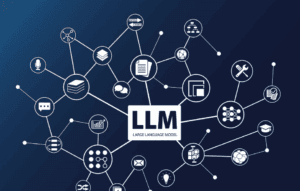With the increasing complexity of global supply chains, warehouse management efficiency and accuracy have become crucial. This article explores how to utilize technologies like Dify, OCR, and LLM to build an intelligent warehouse receipt system. Automating the traditional manual receipt process significantly improves work efficiency, reduces error rates, and helps enterprises achieve digital transformation in logistics.
1. Pain Points of Electronic Warehouse Receipts System
In modern logistics, warehouse receipt processing is a critical step. However, the traditional manual receipt process has many drawbacks:
- Low Efficiency: Tedious manual entry is not only time-consuming but also prone to errors, affecting the efficiency of the entire logistics chain.
- Diverse Formats: Outbound orders from different warehouses come in various formats, making unified processing difficult.
- Challenging Information Extraction: Extracting key information such as product names, quantities, and batches from paper or image-based outbound orders is a time-consuming and labor-intensive task.
- Prone to Errors: Manual entry is susceptible to mistakes, leading to inaccurate inventory data, which impacts subsequent warehouse management.
2. AI-Powered Electronic Warehouse Receipts: How Dify + OCR + LLM Automate WMS
To address the above issues, we can leverage Dify, OCR, and LLM technologies to build an intelligent warehouse receipt system:
- Dify: A low-code LLM workflow orchestration platform, Dify helps quickly build an automated workflow that organically combines OCR and LLM capabilities.
- OCR (Optical Character Recognition): OCR technology extracts text information from paper or image-based documents and converts it into editable electronic text.
- LLM (Large Language Model): LLMs have powerful natural language processing capabilities. They can understand and process complex text, extract key information from the text and perform further analysis.
3. Overview of System Workflow
- Document Upload: Warehouse staff scan or photograph the outbound orders and upload them to the system.
- OCR Recognition: The system uses OCR technology to extract text from the uploaded images and generate electronic text.
- LLM Processing: LLM analyzes the extracted text, identifying key information such as product names, quantities, and batches.
- Data Comparison: The system compares the identified information with the preset product database to verify if the goods are correct.
- Feedback: The system visually presents the comparison results to the staff and generates the corresponding receipt.
Through the above workflow, we can achieve a highly efficient and accurate warehouse receipt system, greatly improving work efficiency and reducing error rates.
4. Introduction to the Dify Platform
Dify is a powerful low-code LLM workflow orchestration platform that provides convenient tools for building intelligent applications. In the warehouse receipt system, Dify plays the following roles:
- Visual Workflow Orchestration: Dify allows users to easily drag and drop to connect OCR, LLM, and other nodes, building a complete automated workflow.
- Rich Node Library: Dify offers various node types, including OCR, LLM, data processing, file operations, and notifications, meeting diverse requirements.
- Flexible Data Integration: Dify supports multiple data sources, allowing the OCR-extracted text to be compared with the product information in the database.
- High Extensibility: Dify allows custom functions, enabling more complex business logic.
5. OCR Technology Selection and Configuration
OCR technology extracts text information from images and converts it into editable text. There are many OCR engines available, such as Tesseract, Baidu OCR, and Alibaba Cloud OCR. Choosing the right OCR engine requires considering the following factors:
- Accuracy: The recognition accuracy of the OCR engine is the primary consideration.
- Speed: In high-concurrency scenarios, the processing speed of the OCR engine is also an important indicator.
- Supported Languages: Considering the internationalization needs of warehouse receipts, the OCR engine should support multiple languages.
- Cost: Free or low-cost OCR engines are more suitable for small and medium-sized enterprises.
Common OCR Engines Comparison:
| OCR Engine | Advantages | Disadvantages |
|---|---|---|
| Tesseract | Open-source and free, supports multiple languages | Lower accuracy, slower speed |
| Baidu OCR | High accuracy, fast speed, supports multiple languages | Commercial, paid |
| Alibaba Cloud OCR | High accuracy, fast speed, supports multiple languages | Commercial, paid |
OCR Configuration:
- Language Selection: Choose the corresponding language model based on the language of the outbound order.
- Image Preprocessing: Preprocess the uploaded images, such as noise removal and contrast enhancement, to improve recognition accuracy.
- Custom Dictionary: If the outbound order contains special characters or terms, a custom dictionary can be created to improve recognition accuracy.
6. Configuring OCR Nodes in Dify
Configuring OCR nodes in Dify is simple. Just select the appropriate OCR engine and configure the API keys and parameters.
Configuration steps:
- Add OCR Node: Drag an HTTP request node as the OCR node in the Dify workflow.
- Configure Node: Send the image in Binary format to the OCR server.
- Configure Parameters: Enter the API key, language, image preprocessing, and other parameters.
- Connect Nodes: Link the node's output to the subsequent LLM node.
7. LLM Model Selection and Training Framework
LLM Model Selection:
- Model Size: Larger models generally offer stronger language understanding capabilities but require more computing resources.
- Pre-training Data: The model's pre-training data determines its knowledge base in specific domains.
- Task Type: For warehouse receipt tasks, we mainly need the model to have information extraction and text classification capabilities.
Common LLM Model Options:
- General Large Models: Such as GPT-4, Gemini, and Qwen2.5, which have powerful general language processing capabilities.
- Multimodal Models: Capable of handling multimodal data like text, images, and videos, achieving cross-modal understanding and generation. Examples include GPT-4 (with image input support) and Qwen2-VL.
LLM Model Training and Fine-tuning:
- Data Preparation: Collect large amounts of outbound order data, clean and label it, and provide high-quality training data for the model.
- Model Training: Train the selected LLM model using the labeled data, enabling it to accurately extract information such as product names, quantities, and batches from the text.
- Model Fine-tuning: Fine-tuning can improve performance if the general model performs poorly on specific tasks.
8. Configuring Dify AI Agent (LLM Nodes) in Dify
Configuring LLM nodes in Dify involves the following steps:
- Select Model: Choose a suitable LLM model from the list supported by Dify.
- Write Prompts: Prompts are questions or instructions posed to the LLM, determining the model's output. For warehouse receipt tasks, prompts could be designed like this:
Please extract the following information from the text: Order number (numeric), waybill number (alphanumeric), product name (string), quantity (numeric), and batch number (alphanumeric). Output in the following JSON format:
{
“orderId”: “20230101001”,
“waybillNumber”: “SF123456789”,
“items”: [
{
“productName”: “Apple”,
“quantity”: 100,
“batchNumber”: “A230101”
},
{
“productName”: “Banana”,
“quantity”: 50,
“batchNumber”: “B230102”
}
]
}Text Content: {OCR Output}
- Configure Parameters: Set parameters like model temperature and maximum output length to control the quality and diversity of results.
9. Data Comparison and Result Display
- Data Comparison: Compare the information extracted by the LLM with the product information in the database. Fuzzy matching can be used to improve matching accuracy.
- Result Display: Display the comparison results visually to the user, such as in tables or charts. Mismatched items can be manually reviewed.
10. Streamlining Logistics with Dify OCR and AI Agent Workflows
A complete warehouse receipt workflow might include the following nodes:
- File Upload Node: Users upload images of outbound orders.
- OCR Node: Recognize the text from the image using OCR.
- LLM Node: Process the OCR output and extract key information.
- Data Comparison Node: Compares the extracted information with the database.
- Result Display and Manual Review Node: Display the comparison results. If there are mismatches, a manual review can be performed.
Final Thoughts
By integrating Dify, OCR, and LLM, we can build an efficient and accurate warehouse receipt processing system. The powerful language understanding capabilities of the LLM model enable the system to handle various complex outbound order formats. Meanwhile, the Dify platform provides us with a low-code development environment, allowing for the rapid setup and deployment of this system.
With the continuous advancement of LLM technology, we can introduce more intelligent features into the warehouse receipt processing system, such as:
- **Anomaly Detection:** Identifying anomalies in outbound orders, such as discrepancies in quantity or damaged goods.
- **Intelligent Recommendations:** Providing smart recommendations for procurement based on historical data and inventory status.
- **Natural Language Interaction:** Supporting user interaction with the system through natural language.
At ZedIoT, we specialize in AI-driven warehouse automation, leveraging cutting-edge technologies like Dify OCR, LLM, and intelligent AI agents to optimize electronic warehouse receipt systems. With our extensive experience in IoT, AI-powered automation, and cloud-based WMS solutions, we help businesses enhance efficiency, reduce operational costs, and achieve seamless warehouse management.
Want to enhance your WMS with AI-powered automation? Contact us today!



